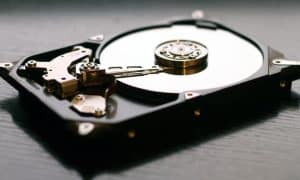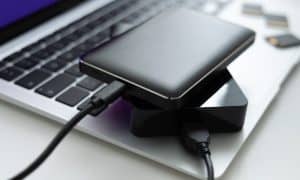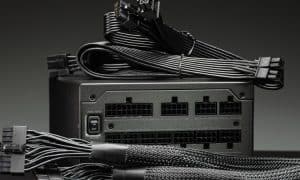How To Install a Solid State Disk (SSD) In Your Laptop
There are plenty of great laptops available on the market; however, even modern performance models don’t always include a Solid State Drive (SSD). It sure is a bummer, but with a minimal amount of elbow grease, you can install your own! An SSD can also breathe new life into older laptops or desktops alike and is much cheaper than buying a new computer. The process is physically really simple, and on most models, it’s just a matter of taking out a few screws.
Why Upgrade to an SSD?
A Solid State Drive is designed a lot differently than your conventional hard disk drive (HDD). A standard HDD is essentially a box with a magnetic spinning metal dish inside. The data is stored in the exterior magnetic skin of the spinning dish, and a very small head-unit reads or writes data to it. The concept isn’t much different than a vinyl disk player. Needless to say, external movement isn’t very good for the disk. The HDD found in laptops differs from desktop units as the Laptop versions are more resistant to damage from movement, but it can still happen. When an HDD reaches the end of life, it becomes a clunking piece of metal, and the data on it is no longer readable.
The inside of an SSD is a series of interconnected flash memory chips. It functions similar to removable USB thumb drives, but the two are not to be compared otherwise. The flash memory inside an SSD is faster than you would find in any external drive and is very reliable. An SSD isn’t bothered by movement, and it offers much faster performance than even the best HDD. Most importantly, when an SSD reaches the end of life, usually, the data on the drive is still readable. Instead of turning into scrap, a dead SSD enters “read-only” mode and is no longer capable of receiving new saves to its memory. The caveat is that SSDs are much more expensive, although the price has dropped significantly in the last three months.
The bottom line: if you haven’t experienced the way Windows or Linux performs with an SSD, you’re missing out!


What you’ll need to get started:
- A laptop that needs upgrading
- An SSD — We recommend the Samsung 840 series, which you can get in 120 GB, 250 GB, and 500 GB, models.
- A small screwdriver (multi-head set recommended)
- An operating system installs disk/USB or OS cloning software.


In the typical laptop case build, there are a few screws hiding an otherwise obvious hard drive slot. The giveaway to its location is the shape and size of the panel hiding the drive. In the case of the laptop in the picture, it just takes the removal of two screws to take off the panel.


Underneath is the stock HDD. It may look a little different, but that is pretty common as many laptop manufacturers include a special mounting bracket to keep it from sliding around. In this model, only two more screws are holding it in.


Now the stock HDD is out, and all we need to do is swap the mounting bracket to the new SSD, but first, we have to remove it. In this model, there are four screws holding the mounting bracket to the HDD.


A good screwdriver makes the job quick and easy. Now screw the mounting bracket onto the new SSD.


Now with the new SSD in place, all that’s left is to put the last panel back on and set up the operating system. In this case, I’m just going to use the Windows 7 Ultimate installation disc in the Laptop’s optical drive to result in a fresh and clean Windows 7 system. Overall it was quick and painless.
There are also a few methods for transferring an existing system from the HDD to the SSD, but we’ll save that for another guide, so stay tuned here on groovyPost!


8 Comments
Leave a Reply
Leave a Reply







Steve Krause
October 24, 2012 at 7:42 am
Great article. Many people make that mistake of spending a lot of cash on a big CPU but a slow drive. Excellent point. Slow Hard Drive = IO Bound = Slow Computer!
wheelsey_4
June 29, 2015 at 6:22 pm
So you basically ended up with a new computer. Technically speaking a brand-new OS. How about going over the process of duplicating or cloning a current slow HDD to a new, quieter and faster SSD? Which migration software would you recommend?
Jack Busch
October 28, 2012 at 10:55 am
Nice guide! I keep seeing SSDs on sale on Newegg and Dealnews and I’m thinking about upgrading. The price is coming way down.
Steve Krause
October 28, 2012 at 11:08 am
For me, the upgrade was worth it just to make the hard drive clicks and clunks go away. And sure, the stability and performance was a nice bump also. ;)
If you have the cash, this is probably the best upgrade a person can make to a computer PERIOD. So many get caught up on fast CPU’s and Memory upgrades when the real problem is a slow disk or disk I/O problems.
A fast disk = a fast computer. :)
M Hanson
October 29, 2012 at 9:56 am
Oh man,. replacing the HDD with a slick new SSD was like dropping a V8 into a Pinto! The boot and op speed nearly gives me whiplash, and the heat issue disappeared. So rejuvenating was my experience that replaced the drive disk in my Significant Otter’s aging Compaq. Smartest move ever since I rebuilt the engine in my $100 car, then drove it another 8 years.
Timothy Shubert
December 25, 2012 at 5:41 am
FYI, some laptop models (Dell) have the HD built inside, not easy to get to. And what if the poles shift, will it still work?
PK Almonte
February 4, 2013 at 1:24 pm
I have a question: Would upgrading a desktop to an SSD be a good move? I’d like to give new life to my 5-year-old desktop. Would it be worthwhile?
Marlene
November 23, 2013 at 2:24 pm
I have a question, what if I want to keep my hard drive but add a SSD drive as an additional to bust performance on my laptop, is this possible? I have a SAMSUNG Q430